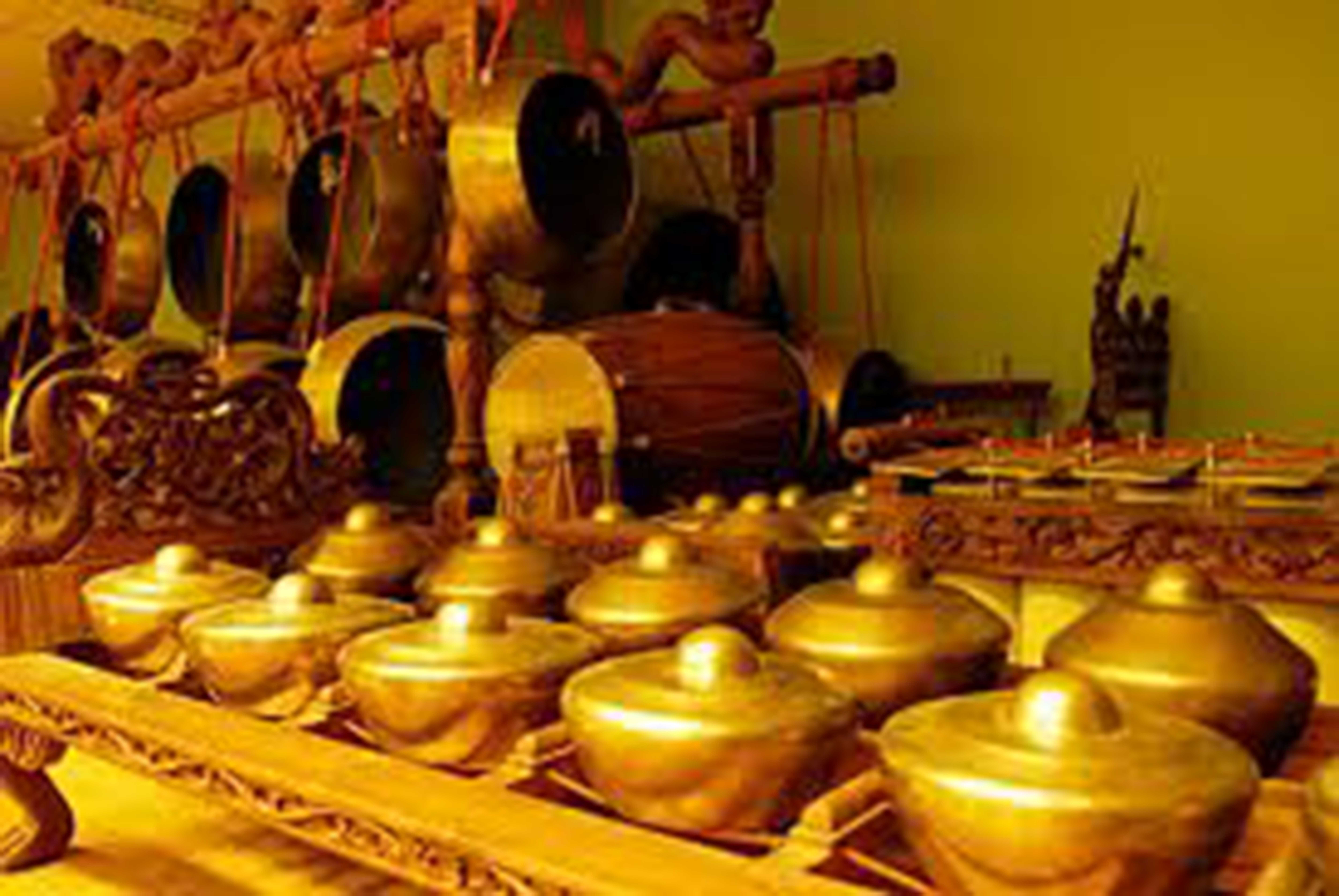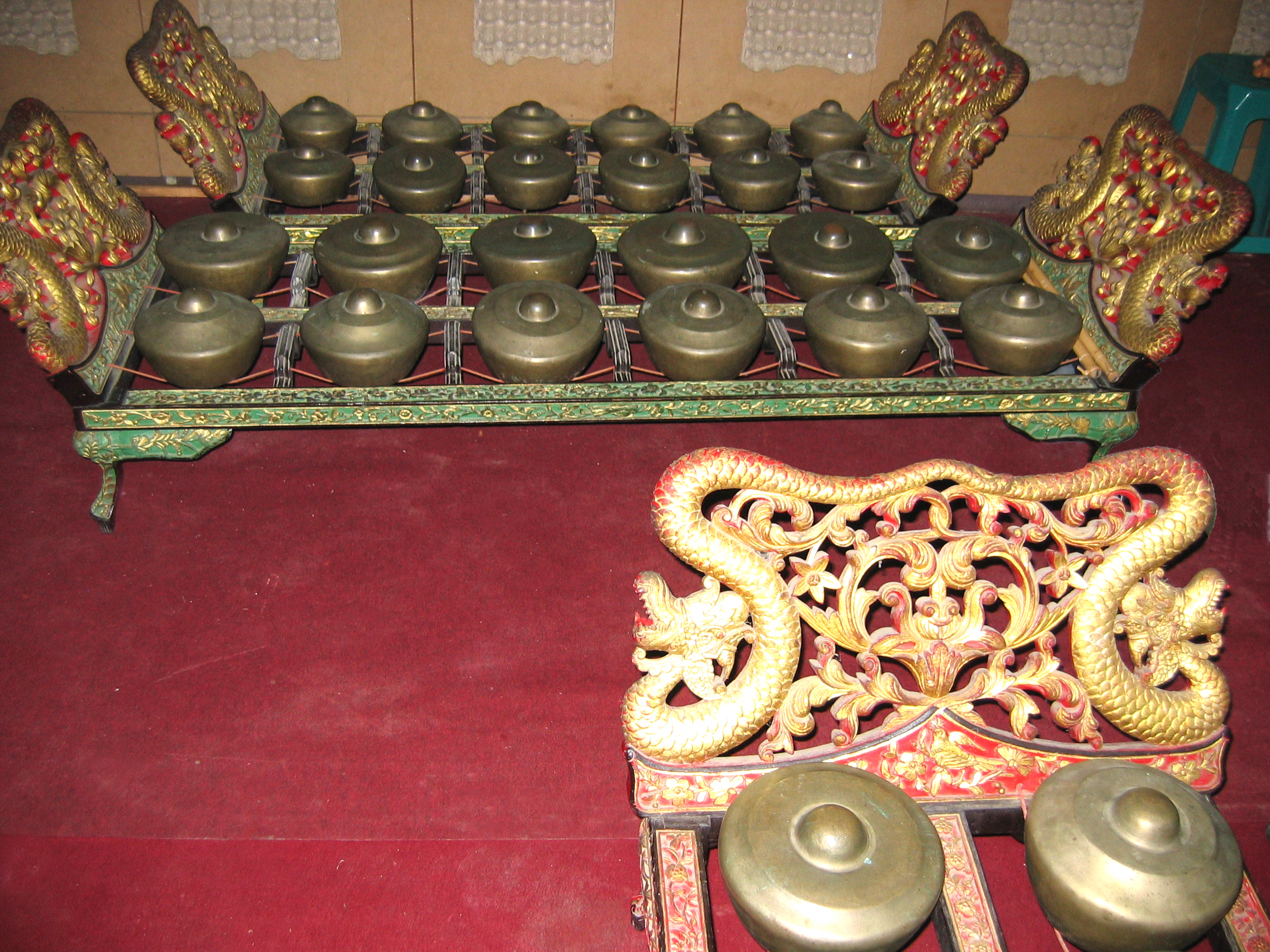|
Degung
''Gamelan degung'' is a form of Sundanese musical ensemble that uses a subset of modified gamelan instruments with a particular mode of ''degung'' scale. The instruments are manufactured under local conditions in towns in West Java such as Bogor and Bandung. ''Degung'' music is often played at public gatherings in West Java, such as at local elections, as well as many other events. There is international interest in ''degung'' as well among communities in other countries interested in Indonesia and gamelan music.Dewi Anggraeni"Melbourne: Gamelan, elephants and 'Jackpot'" , ''The Jakarta Post'', 22 February 2004. Gamelan degung also playable in '' madenda'' scale, which included in the set as a complementary tone, usually marked as -3/''ni'' tone in the set. Playing gamelan degung in this scale requires the substitution of the 3/''na'' metal bars into -3/''ni'' tone on all instruments. Instruments The instrumentation of ''gamelan degung'' is quite flexible. It may include: ... [...More Info...] [...Related Items...] OR: [Wikipedia] [Google] [Baidu] |
Gamelan
Gamelan () ( jv, ꦒꦩꦼꦭꦤ꧀, su, ᮌᮙᮨᮜᮔ᮪, ban, ᬕᬫᭂᬮᬦ᭄) is the traditional ensemble music of the Javanese, Sundanese, and Balinese peoples of Indonesia, made up predominantly of percussive instruments. The most common instruments used are metallophones played by mallets and a set of hand-played drums called '' kendhang/Kendang'', which register the beat. The kemanak (a banana-shaped idiophone) and gangsa (another metallophone) are commonly used gamelan instruments in Bali. Other instruments include xylophones, bamboo flutes, a bowed instrument called a ''rebab'', a zither-like instrument ''siter'' (in Javanese ensemble) and vocalists named '' sindhen'' (female) or ''gerong'' (male).Sumarsam (1998)''Introduction to Javanese Gamelan'' Middletown. Although the popularity of gamelan has declined since the introduction of pop music, gamelan is still commonly played in many traditional ceremonies and other modern activities in Indonesia, b ... [...More Info...] [...Related Items...] OR: [Wikipedia] [Google] [Baidu] |
Gamelan Emas
Gamelan () ( jv, ꦒꦩꦼꦭꦤ꧀, su, ᮌᮙᮨᮜᮔ᮪, ban, ᬕᬫᭂᬮᬦ᭄) is the traditional ensemble music of the Javanese, Sundanese, and Balinese peoples of Indonesia, made up predominantly of percussive instruments. The most common instruments used are metallophones played by mallets and a set of hand-played drums called ''kendhang/Kendang'', which register the beat. The kemanak (a banana-shaped idiophone) and gangsa (another metallophone) are commonly used gamelan instruments in Bali. Other instruments include xylophones, bamboo flutes, a bowed instrument called a ''rebab'', a zither-like instrument ''siter'' (in Javanese ensemble) and vocalists named '' sindhen'' (female) or ''gerong'' (male).Sumarsam (1998)''Introduction to Javanese Gamelan'' Middletown. Although the popularity of gamelan has declined since the introduction of pop music, gamelan is still commonly played in many traditional ceremonies and other modern activities in Indonesia, both at f ... [...More Info...] [...Related Items...] OR: [Wikipedia] [Google] [Baidu] |
Gamelan
Gamelan () ( jv, ꦒꦩꦼꦭꦤ꧀, su, ᮌᮙᮨᮜᮔ᮪, ban, ᬕᬫᭂᬮᬦ᭄) is the traditional ensemble music of the Javanese, Sundanese, and Balinese peoples of Indonesia, made up predominantly of percussive instruments. The most common instruments used are metallophones played by mallets and a set of hand-played drums called '' kendhang/Kendang'', which register the beat. The kemanak (a banana-shaped idiophone) and gangsa (another metallophone) are commonly used gamelan instruments in Bali. Other instruments include xylophones, bamboo flutes, a bowed instrument called a ''rebab'', a zither-like instrument ''siter'' (in Javanese ensemble) and vocalists named '' sindhen'' (female) or ''gerong'' (male).Sumarsam (1998)''Introduction to Javanese Gamelan'' Middletown. Although the popularity of gamelan has declined since the introduction of pop music, gamelan is still commonly played in many traditional ceremonies and other modern activities in Indonesia, b ... [...More Info...] [...Related Items...] OR: [Wikipedia] [Google] [Baidu] |
West Java
West Java ( id, Jawa Barat, su, ᮏᮝ ᮊᮥᮜᮧᮔ᮪, romanized ''Jawa Kulon'') is a province of Indonesia on the western part of the island of Java, with its provincial capital in Bandung. West Java is bordered by the province of Banten and the country's capital region of Jakarta to the west, the Java Sea to the north, the province of Central Java to the east and the Indian Ocean to the south. With Banten, this province is the native homeland of the Sundanese people, the second-largest ethnic group in Indonesia. West Java was one of the first eight provinces of Indonesia formed following the country's independence proclamation and was later legally re-established on 14 July 1950. In 1966, the city of Jakarta was split off from West Java as a 'special capital region' (), with a status equivalent to that of a province, while in 2000 the western parts of the province were in turn split away to form a separate Banten province. Even following these split-offs, West Java is ... [...More Info...] [...Related Items...] OR: [Wikipedia] [Google] [Baidu] |
Gamelan Salendro
The gamelan salendro is a form of gamelan music found in West Java, Indonesia. It is played as an accompaniment to wayang golek (rod puppet) performances and dances. It uses a similar ensemble as a small central Javanese gamelan, but has developed differently, and shows the more exuberant character.Broughton, Simon, et al., eds. ''World Music: The Rough Guide''. London: The Rough Guides, 1994. Pages 420-421. See also * Gamelan * Degung * Angklung The ( Sundanese: ) is a musical instrument from the Sundanese people in Indonesia made of a varying number of bamboo tubes attached to a bamboo frame. The tubes are carved to have a resonant pitch when struck and are tuned to octaves, simila ... References Gamelan ensembles and genres Sundanese music {{music-genre-stub ... [...More Info...] [...Related Items...] OR: [Wikipedia] [Google] [Baidu] |
Pelog
Pelog ( su, ᮕᮦᮜᮧᮌ᮪, translit=Pélog /pelog/, jv, ꦥꦺꦭꦺꦴꦒ꧀, ban, ᬧᬾᬮᭀᬕ᭄, translit=Pélog /pelok/) is one of the essential tuning systems used in gamelan instruments that has heptatonic scale. The other, older, scale commonly used is called ''slendro''. ''Pelog'' has seven notes, but many gamelan ensembles only have keys for five of the pitches. Even in ensembles that have all seven notes, many pieces only use a subset of five notes, sometimes the additional 4th tone is also used in a piece like western accidentals. Etymology Pelog is a Javanese term for one of the scales in gamelan. In Javanese, the term is said to be a variant of the word ''pelag'' meaning "fine" or "beautiful". Tuning Since the tuning varies so widely from island to island, village to village, and even among ''gamelan'', it is difficult to characterize in terms of intervals. One rough approximation expresses the seven pitches of Central Javanese ''pelog'' as a subset ... [...More Info...] [...Related Items...] OR: [Wikipedia] [Google] [Baidu] |
Bonang
The bonang is an Indonesian musical instrument used in the Javanese gamelan. It is a collection of small gongs (sometimes called "kettles" or "pots") placed horizontally onto strings in a wooden frame (''rancak''), either one or two rows wide. All of the kettles have a central boss, but around it the lower-pitched ones have a flattened head, while the higher ones have an arched one. Each is tuned to a specific pitch in the appropriate scale; thus there are different bonang for pelog and slendro. They are typically hit with padded sticks (''tabuh''). This is similar to the other cradled gongs in the gamelan, the kethuk, kempyang, and kenong. Bonang may be made of forged bronze, welded and cold-hammered iron, or a combination of metals. In addition to the gong-shaped form of kettles, economical bonang made of hammered iron or brass plates with raised bosses are often found in village gamelan, in Suriname-style gamelan, and in some American gamelan. In central Javanese gamela ... [...More Info...] [...Related Items...] OR: [Wikipedia] [Google] [Baidu] |
Kendang
Kendang or Gendang ( jv, ꦏꦼꦤ꧀ꦝꦁ, translit=Kendhang, su, ᮊᮨᮔ᮪ᮓᮀ, translit=Kendang, ban, ᬓᬾᬦ᭄ᬤᬂ, translit=Kendang, Tausug/Bajau Maranao: ''Gandang'', Bugis: ''Gendrang'' and Makassar: ''Gandrang'' or ''Ganrang'' ) is a two-headed drum used by people from the Indonesian Archipelago. Kendang is one of the primary instruments used in the Gamelan ensembles of Javanese, Sundanese, and Balinese, the Kendang ensemble as well as various Kulintang ensembles in Indonesia, Brunei, Malaysia, Singapore, and the Philippines. It is constructed in a variety of ways by different ethnic groups. It is a relation to the Indian mridangam double-headed drum. Overview The typical double-sided membrane drums are known throughout Maritime Southeast Asia and India. One of the oldest image of kendang can be found in ancient temples in Indonesia, especially the ninth century Borobudur and Prambanan temple. Among the Javanese, Sundanese, and Balinese, the has one ... [...More Info...] [...Related Items...] OR: [Wikipedia] [Google] [Baidu] |
Musical Ensemble
A musical ensemble, also known as a music group or musical group, is a group of people who perform instrumental and/or vocal music, with the ensemble typically known by a distinct name. Some music ensembles consist solely of instrumentalists, such as the jazz quartet or the orchestra. Other music ensembles consist solely of singers, such as choirs and doo wop groups. In both popular music and classical music, there are ensembles in which both instrumentalists and singers perform, such as the rock band or the Baroque chamber group for basso continuo ( harpsichord and cello) and one or more singers. In classical music, trios or quartets either blend the sounds of musical instrument families (such as piano, strings, and wind instruments) or group together instruments from the same instrument family, such as string ensembles (e.g., string quartet) or wind ensembles (e.g., wind quintet). Some ensembles blend the sounds of a variety of instrument families, such as the orchestra, ... [...More Info...] [...Related Items...] OR: [Wikipedia] [Google] [Baidu] |
Saron (instrument)
The saron is a musical instrument of Indonesia, which is used in the gamelan. It normally has seven bronze bars placed on top of a resonating frame (''rancak''). It is usually about 20 cm (8 in) high, and is played on the floor by a seated performer. In a pelog scale, the bars often read 1-2-3-5-6-7 across (the number four is not used because of its relation to death) (in kepatihan notation, kepatihan numbering); for slendro, the bars are 6-1-2-3-5-6-1; this can vary from gamelan to gamelan, or even among instruments in the same gamelan. Slendro instruments commonly have only six keys. It provides the core melody (balungan) in the gamelan orchestra. Varieties Sarons typically come in a number often sizes, from smallest to largest: *Saron panerus (also: peking) *Saron barung (sometimes just saron) *Saron demung (often just called demung) Each one of those is pitched an octave below the previous. The slenthem or slentho performs a similar function to the sarons one oct ... [...More Info...] [...Related Items...] OR: [Wikipedia] [Google] [Baidu] |






